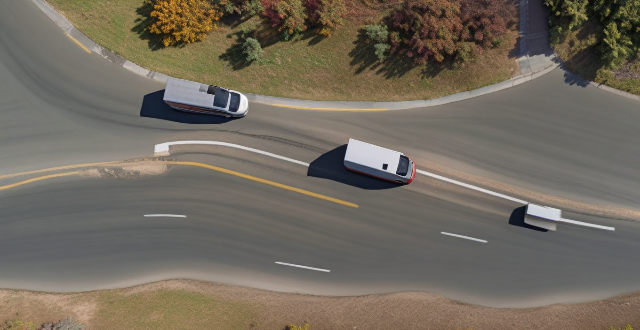Autonomous driving can reduce traffic congestion, improve energy efficiency, and change land use patterns for the better, but it also poses risks such as software failures and cyberattacks that could lead to accidents with environmental consequences.

Environmental Impacts of Autonomous Driving
Introduction:
Autonomous driving, also known as self-driving or driverless cars, is an emerging technology that has the potential to revolutionize transportation. However, like any new technology, it comes with its own set of environmental impacts. In this article, we will explore the various ways in which autonomous driving can affect the environment.
Reduction in Traffic Congestion:
One of the most significant environmental impacts of autonomous driving is the reduction in traffic congestion. Self-driving cars are designed to communicate with each other and make split-second decisions based on real-time data, which can help reduce traffic jams and improve overall traffic flow. This can lead to a decrease in fuel consumption and emissions from idling vehicles.
Energy Efficiency:
Self-driving cars are often electric or hybrid vehicles, which means they are more energy-efficient than traditional gasoline-powered cars. This can lead to a reduction in greenhouse gas emissions and air pollution. Additionally, autonomous driving technology can optimize routes and reduce unnecessary stops, further improving energy efficiency.
Changes in Land Use:
As autonomous driving becomes more prevalent, there may be changes in land use patterns. For example, parking lots may become smaller or even disappear altogether, as self-driving cars can drop off passengers and then go park themselves elsewhere. This could lead to a reduction in urban sprawl and the conversion of former parking lots into green spaces or other uses.
Potential for Accidents:
While autonomous driving has the potential to greatly reduce the number of accidents caused by human error, there is also a risk of software failures or cyberattacks that could lead to accidents. These accidents could have environmental consequences if they involve spills of hazardous materials or damage to natural resources.
Conclusion:
In conclusion, autonomous driving has both positive and negative environmental impacts. On one hand, it can reduce traffic congestion, improve energy efficiency, and change land use patterns for the better. On the other hand, it also poses risks such as software failures and cyberattacks that could lead to accidents with environmental consequences. As with any new technology, it is important to carefully consider these impacts and take steps to mitigate any negative effects while maximizing the benefits.